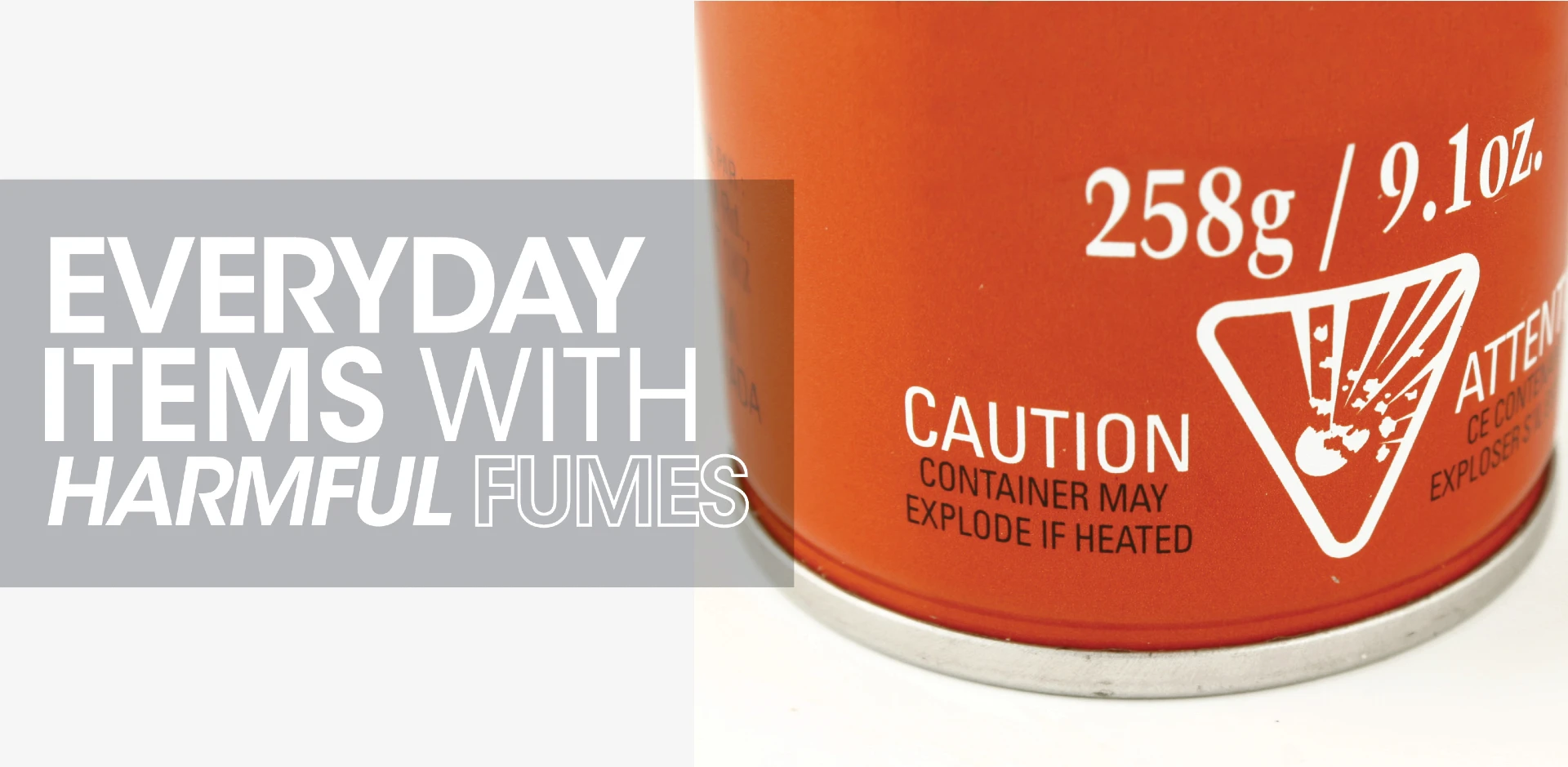The Dangers and Effects of Inhaling Toxic Fumes

Did you know there are many common items in your home that degrade your indoor air quality? Lurking in products from furniture to harmful cleaning supplies is an array of toxic compounds with the potential to make you sick. There are many side effects of inhaling toxic fumes. Learn how to improve indoor air quality and limit the harmful fumes inside your home.
Read on to learn why it’s important to know the risks and to understand the steps you can take to improve the indoor air quality in your home.
Toxic Household Products
Seemingly innocuous household products, furniture, and building supplies may harbor toxic fumes. Most often, they’re a byproduct of the manufacturing process. Other times, porous surfaces harbor toxic fumes that off-gas into your home.
Here are a few of the most common toxic household products:
Nail Polish
The fumes from nail polish and nail polish remover are harmful to breathe in. Air quality testing shows these cosmetic products/solvents release phthalates, acetone, methylbenzene, and benzophenone into the air quickly upon evaporation. If you must use these products, use them in a well-ventilated area or even outside to reduce toxicity to the lungs, cell tissue, and central nervous system.
Harmful Cleaning Supplies
Common store-bought household cleaning products, as well as bleach and ammonia, release toxic gases that can result in respiratory distress. Consider swapping out harmful cleaning supplies for more natural alternatives that can easily tackle the job: baking soda, vinegar, soap powder, lemon, and plain old hot water.
Non-Stick Pots and Pans
The coating on non-stick pans, polytetrafluoroethylene (PTFE), releases toxic gasses when heated that have been linked to cancer, organ damage, reproductive damage, and other health issues. Trade non-stick pans in for stainless steel or iron. If you just can’t bear to part with them, cook at lower temperatures, as higher temperatures increase the release of gases.
Manufactured Furniture
It may seem like a bargain, but cheap furniture can be toxic. The pressed wood in particleboard pieces such as those used in kids’ bedrooms and bargain storage units are typically made with formaldehyde or isocyanate glues, which are toxic. Brominated and chlorinated flame-retardants found in upholstered furniture made with polyurethane foam are also dangerous and linked to cancer, neurological impairment, and hormone disruption. Invest in quality new or second-hand solid wood furniture that will treat your body better.
Dryer Sheets
Dryer sheets may be detrimental to your health. They coat your clothes in a thin layer of chemicals and fragrances that are potentially toxic. One common ingredient—quaternary ammonium salts—can cause skin irritation, respiratory issues, nausea, headaches, and even vomiting. There are alternatives. Swap out those sheets for a few wool balls or an old sweater to naturally eliminate cling, or simply throw some vinegar in your washer’s rinse cycle.
Candles
Paraffin (sludge waste from petroleum that is contained in most candles) releases carcinogens when burned. Worse, some scented candles have been found to carry lead in the wick, releasing dangerous amounts of this heavy metal into the air when burned. And the sooty residue left over? That contains benzene and methylbenzene—both carcinogens and nervous system hazards. Synthetic scents are known to release harmful pollutants in the air that can be dangerous if inhaled. Scrap synthetic scents of all forms and use natural scented candles or an essential oil diffuser!Rugs and Carpeting
Carpeting can contain a host of toxins. Mold, mildew, bodily fluids, and more can contaminate older rugs, while newer carpets can release a wide variety of pollutants. These come from the fibers themselves, flame-retardants, and anti-stain coatings. Toxins that off-gas from carpets include volatile organic compounds (VOCs) such as dichlorobenzene (a known carcinogen) and 4-Phenylcyclohexene—not just that “new carpet smell,” but linked to visual, nasal, and respiratory issues. Think carpets are cozy? Opt for organic wool, cotton, hemp, or jute. Or upgrade to hard surfaces such as tile and hardwood—and keep them clean.
This list is not exhaustive, but names just a few household products and building materials that commonly degrade indoor air quality in American homes. Take charge by checking the ingredients and warning labels on products before bringing them into your home, and finding toxin-free alternatives for paint, varnish, glues and other building materials when your home is being renovated. There are many side effects of inhaling toxic fumes. For this reason, we recommend switching to toxic-free alternatives as soon as possible.
What About Air Fresheners?
Air fresheners may compromise the air you breathe. Oftentimes, these types of products release toxic chemicals, many of which are not disclosed on labels. The American Journal of Respiratory and Critical Care Medicine links regular use of aerosol sprays with a 30-50% increased risk of developing asthma. The following products should be avoided:
- Aerosol scented sprays
- Scented electric plug-ins
- Scented stick-ons
- Any other chemical-scent-laden items
Don’t mask smells with fruity or floral scents. Instead, learn how to improve indoor air quality!
Residential Indoor Air Quality Testing Near Me
The first step in knowing how to improve indoor air quality for you and your family is getting your air tested. Let the IAQ experts at Aire Serv® perform a professional indoor air quality test to check how clean your air really is. Request an appointment online or call to get in touch with the Aire Serv location nearest you.
 Click to call
Click to call


